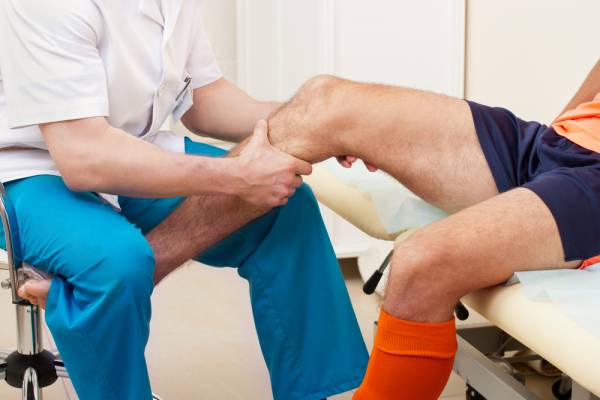One of the most common questions I receive as a coach is, “I hurt my [insert body part here], but I want to keep training. What can I do?” At some point or another, either as coaches or as athletes, we have encountered this dilemma. Today, I am going to walk you through how I handle this personally and also the advice I give my clients.
Specific Analysis
I have a couple questions I immediately ask my students when presented with the injury scenario. First, “What were you doing when you hurt it?” and second, “Can you show me specifically which movements cause pain?” You can ask yourself these questions, too. As a coach or an athlete you cannot make an educated decision on what to do, if you do not know where you currently are.
Get Real
This is where I get real with my students and where you need to get real with yourself. If you tell me your shoulder hurts so bad you cannot lift it and you just hurt it yesterday, I am going to send you home. I understand you are game and ready to go, but we need to think beyond today. We are not professional athletes and tomorrow is not the Olympics. When you are injured, your priority is dealing with your injury, or at the very least, not worsening it. If you are questioning whether or not you should be at the gym – go home.
Focus On Recovery

Use your time at home to work your recovery. Recovery does not mean sitting still. It could mean using a foam roller and a lacrosse ball to work out muscle spasms or adhesions. It could mean icing for ten minutes at the top of every hour. It could mean visiting your chiropractor, massage therapist or yoga instructor. It could mean visiting your doctor and having diagnostic tests run. It does mean, without a doubt, listening to your body and being nice to it.
Be Reasonable
If you choose to stay at the gym and work around your injury, then really work around it and make sure your coach is aware of the situation. Do not do things that only “hurt a little.” If it hurts, stop doing it. If you are hurting it, you are not healing it. Yes, it might feel better once you get going into the workout, but that has more to do with endorphins and adrenalin than it does with whether or not you are causing damage and preventing healing. This does not mean you cannot move around at all, but do not do things that cause pain.
Don’t Create Other Injuries
If you are dealing with an injury requiring a long healing period, a shoulder injury for example, be careful you do not cause other injuries or imbalances in your training. If your left shoulder is hurt and you spend three months only working your right arm and right shoulder, you are setting yourself up for future problems. It is not just your arms, but your back, hips, and legs that will be affected by this constant unbalanced unilateral movement. In this scenario, you are better of focusing on lower body and core exercises. Engage your coach in helping you choose appropriate exercises.
There Is No Quick Fix
 As with most things in life, we are in a hurry to get to the next step and injury recovery is no different. Beware of the quick fix. I have had clients come to me saying their doctor wanted to give them a cortisone shot. Unless you are playing the Super Bowl tomorrow, there is no reason for you to get a cortisone shot. In my experience it only allows you to train through the pain and worsen the injury. Likewise, beware of painkillers in general. If you want to take something, double or triple your fish oil and deal with the inflammation aspect of your injury. Pain is not a voice we should carelessly stifle.
As with most things in life, we are in a hurry to get to the next step and injury recovery is no different. Beware of the quick fix. I have had clients come to me saying their doctor wanted to give them a cortisone shot. Unless you are playing the Super Bowl tomorrow, there is no reason for you to get a cortisone shot. In my experience it only allows you to train through the pain and worsen the injury. Likewise, beware of painkillers in general. If you want to take something, double or triple your fish oil and deal with the inflammation aspect of your injury. Pain is not a voice we should carelessly stifle.
If It Hurts, Stop. It’s Just Not Worth It.
This one is worth repeating. For the vast majority of us, we work out for fun or because we are committed to a certain level of health. We are not professional athletes, nor for the most part even competitive amateur athletes. Our priorities in our lives are different from a pro-athlete and therefore our priorities in the gym should be also.
Your mission in the gym is to get stronger, fitter, and healthier for the long haul. As a coach, I want to see you getting out of bed on your own at the age of 80. Training through pain and skipping recovery will not get you to that place. You can do it in the short-term, but it will come back to haunt you in the form of continued injuries, arthritis, chronic pain and more.
Think about the people in the gym who have the best form and put up the best numbers. They are the people who put in the work day in and day out, not the people who try to muscle through things. Treat your injury recovery the same way. Take the time necessary to heal properly; it will serve you in both your performance and your quality of life for years to come.






